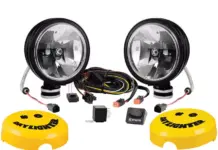Summary
In Uganda, limited access to expensive CT scanning equipment can mean patients with brain injuries often face long waits before they can be examined, delays when issues such as internal bleeding could become critical. But Duke brain scientists are hoping a pocket-sized scanner could offer a much more accessible and affordable option.
The handheld device, developed by InfraScan, has been approved for use on patients in the United States and elsewhere to detect intracranial bleeding. Researchers with Duke Global Neurosurgery and Neurology (DGNN) led a study of the device’s use among 500 patients at Duke University Hospital, finding it detected bleeding in 100% of patients needing surgery, according to a press release in August.
Analysis
‘[Resources] that are portable make it easier to get care to people, and the community doesn’t have to come to you’ (Banks, A Pocket-Sized Alternative to a CT Scan). Reading this quote made me challenge how I have been thinking about diagnosing a problem. This seems like it would be a value held high by all medical professionals and adaptable to those in the military. The article discusses a device that can detect internal bleeding within patients that helps prevent further injury and get the people who desperately need help the assistance they deserve. What what does internal brain bleeds have to do with helping fellow comrades on the field. I believe there is an opportunity to have all member more adequately educated or trained when diagnosing comrades. Internal bleeding is an extremally hard concept for professionals to detect so for those that lack a medical background they may have no clue what is going on inside someone’s body. Now a days first responders use the S.A.L.T method to diagnose injured people into four categories, green (least severe), yellow, red, black (extremally severe). Can this type of technology, being so small and portable be distributed within battalions so soldiers can more accurately diagnose the severity of an injury?




